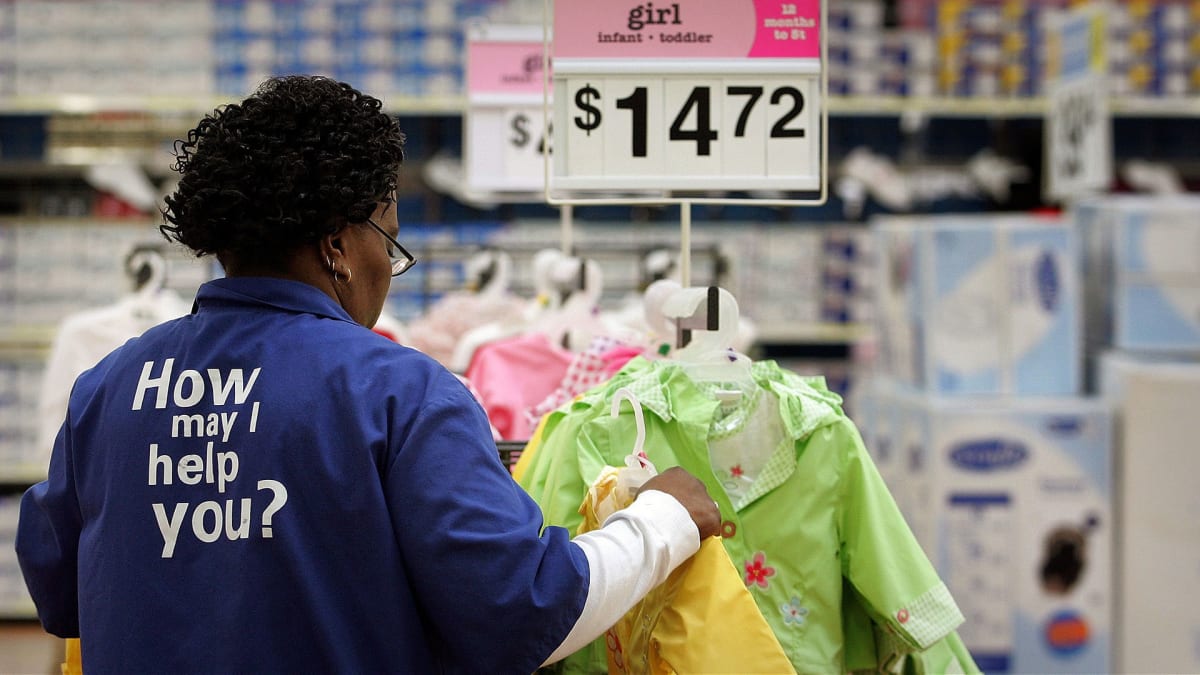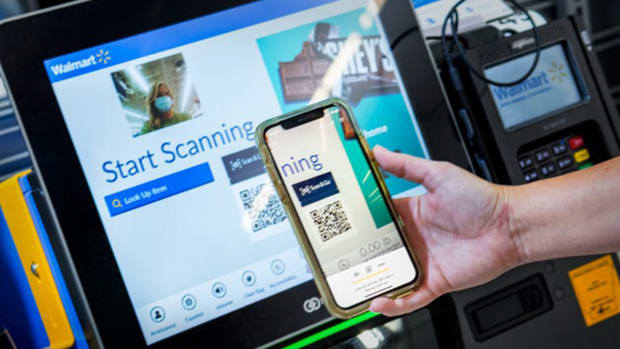
The road to recovery from the covid pandemic has been anything but easy for Walmart (WMT).
The path has certainly been lined by some roses -- the stock crescendoed to new highs during the pandemic (up over 82% over the past five years) and has reported consistent revenue beats while other retailers gasp for life.
DON'T MISS: Starbucks Tests a Change That May Anger Customers
But it hasn't been all good, particularly if you're a Walmart employee.
In March 2022, Walmart cut paid leave in half for employees who tested positive for covid. They were allotted one week to quarantine and recover -- rather than the previously standard two weeks.
The company also grabbed headlines in February 2023 when employee Ernest Paschal II was fired from his post while recovering from sepsis.
"Unfortunately, this is a part of Walmart’s pattern of punishing workers for medical absences by assigning them points," nonprofit advocacy group A Better Balance, which took on Paschal's case, said. "At Walmart, employees who receive 'too many' points miss out on pay raises and promotional opportunities, and can even be fired. Often, employees receive points regardless of the reason for their absences, including for absences caused by medical conditions or caregiving obligations that qualify for legally-protected time off under federal, state, and local law."

Image source: Walmart
Countless other stories echo Paschal's. Human Impact Partners data suggest that if Walmart was more compassionate about its paid sick leave policies, 7,618 fewer employees would have contracted covid and at least 133 lives could have been saved.
No doubt Walmart's corporate policies toward employees is flawed. And at least one customer-facing policy that remains from the covid era demands fixing, too.
Walmart's Latest Nightmare Gets Bigger
Many retailers lost employees following the pandemic. Long hours, exposure to pathogens, scant benefits, and unruly customers make working a retail job wholly unappealing to most people. And the solution hasn't been to pay employees more or offer better benefits to entice talent. It's been to automate more jobs and place the outstanding tasks on customers, where possible.
That pinch may be felt strongest at some Walmart locations, where long lines and fewer blue vests are in place for customer assistance. So it has started implementing more self-checkout stands, where customers may scan, bag, and pay for their own items without the assistance of a cashier.
One video circulating on TikTok shows a very frustrated customer with a full cart of groceries taking an employee to task for the lack of help.
"It’s a choice right, either you ring me out, or I just leave all the stuff here," the customer says to a young Walmart employee at a cash register, who claimed the store was too short-staffed to ring up his items.
"Well, I’m not saying leave it there, but self-checkout is open," the employee says, trying to offer help.
"Well, I’m not going to ring it out it’s not my job. I’m a paying customer, I came to pay for things, but I didn’t come here to work," the customer shoots back, panning over to his cart full of groceries and a long line of customers behind him.
The video has amassed almost 350,000 views on TikTok and 14,400 likes.
"Sick of these companies throwing out customer service, they had so many employees for everything but customer service. It's time to hit them where it counts. Stop giving these companies your money," the caption reads with the hashtag #boycottwalmart.
Self Checkout Is a Bad Solution -- And Creates Bigger Problems
Self-checkout has been the easy and convenient solution for many retailers trying to solve employee attrition and rising costs. But each year, data finds that the tech actually costs many stores more in shoplifting, as the automated machines rarely catch whether a customer pays for all their items.
It's estimated that Walmart loses $3 billion each year due to shoplifting.







